Security Concepts
The CIA Triad
- Combination of principles
- The fundamentals of security
- Sometimes referenced as the AIC Triad
- Confidentiality
- Prevent disclosure of information to unauthorized individuals or systems
- Integrity
- Messages can’t be modified without detection
- Availability
- Systems and networks must be up and running
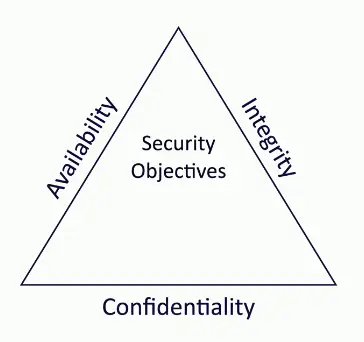

1. Confidentiality
- Certain information should only be known to certain people
- Prevent unauthorized information disclosure
- Encryption
- Encode messages so only certain people can read it
- Access Controls
- Selectively restrict access to a resource
- Two-factor Authentication
- Additional confirmation before information is disclosed
2. Integrity
- Data is stored and transferred as intended
- Any modification to the data would be identified.
- Hashing
- Map data of an arbitrary length to data of a fixed length
- Digital Signatures
- Mathematical scheme to verify the integrity of data
- Certificates
- Combine with a digital signature to verify an individual
- Non-repudiation
- Provides proof of integrity, can be asserted to be genuine!
3. Availability
- Information is accessible to authorized users
- Always at your fingertips
- Redundancy
- Build services that will always be available
- Fault Tolerance
- System will continue to run, even when a failure occurs
- Patching
- Stability
- Close security holes
Non-repudiation
- You can’t deny what you have said
- There is no taking it back
- Signs a contract
- Your signature adds non-repudiation
- You really did sign the contract
- Others can see your signature
- Adds a different perspective for cryptography
- Proof of integrity
- Proof of origin, with high assurance of authenticity
Proof of integrity
- Verify data doesn’t change
- The data remains accurate and consistent
- In cryptography, we use a hash
- Represents data as a short string of text
- A message digest, a fingerprint
- If the data changes, the hash changes
- If the person changes, you get a different fingerprint
- Does not necessarily associate data with an individual
- Only tells you if the data has changed
Proof of Origin
- Prove the message was not changed
- Prove the source of the message
- Make sure the signature isn’t fake
- Sign with the private key
- The message doesn’t need to be encrypted
- Nobody else can sign this (obviously)
- Verify with the public key
- Any change to the message will invalidate the signature
Verifying a Digital Signature
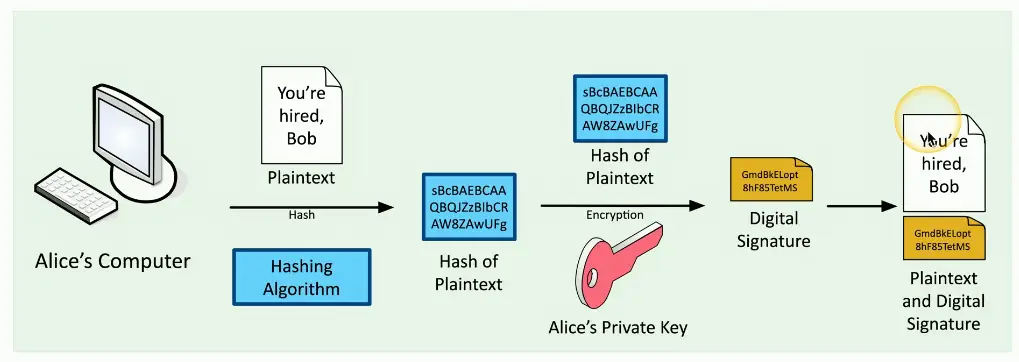

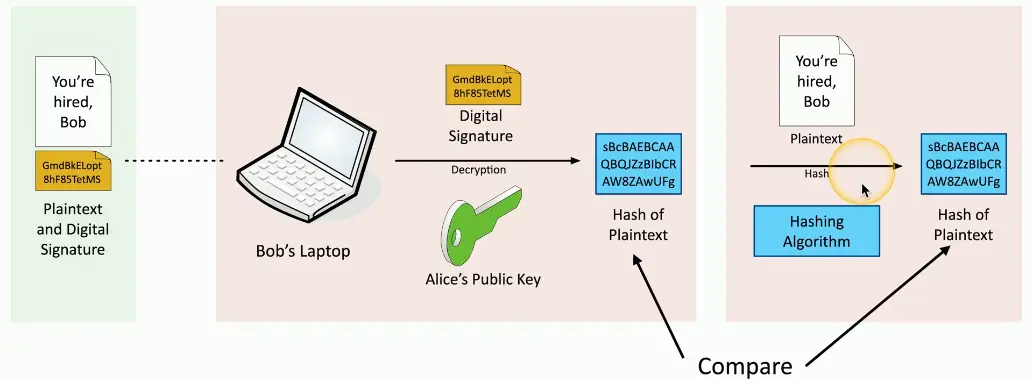

Authentication, Authorization, and Accounting (AAA) Framework
- Identification
- This is who you claim to be
- Usually your username
- Authentication
- Prove you are who you say you are
- Password and other authentication factors
- Authorization
- Based on your identification and authentication, what access do you have?
- Accounting
- Resources used: Login time, data sent and received, logout time
Authenticating People
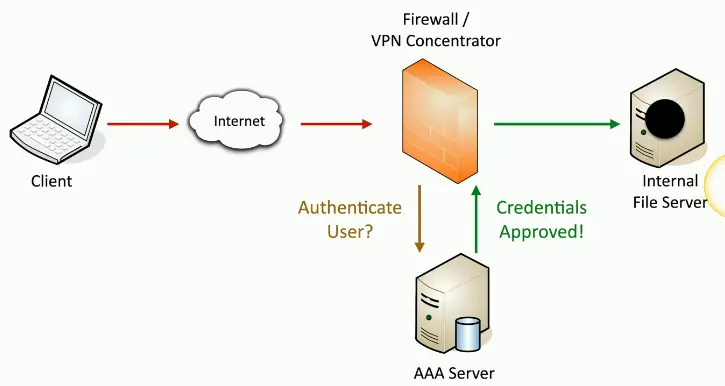

Authenticating Systems
- You have to manage many devices
- Often devices that you will never physically see
- A system can’t type a password
- And you may not want to store one
- How can you truly authenticate a device
- Put a digitally signed certificate on the device
- Other business processes rely on the certificate
- Acess to the VPN from authorized devices
- Management software can validate the end device
Certificate Authentication
- An organization has a trusted Certificate Authority (CA)
- Most organizations maintain their own CAs
- The organization creates a certificate for a device
- And digitally signs the certificate with the organization’s CA
- The certificate can now be included on a device as an authentication factor
- The CA’s digital signature is used to validate the certificate
Certificate-based Authentication
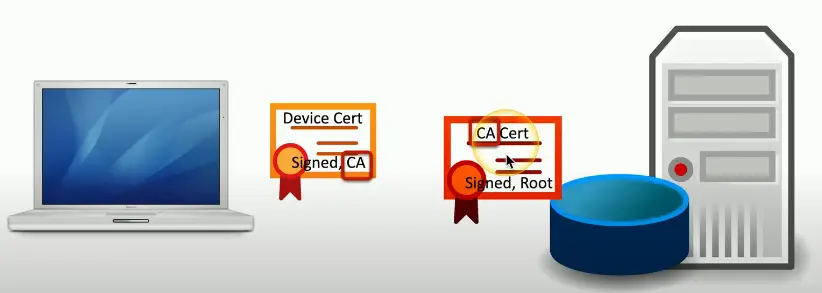

Authorization Models
- The user or device has now authenticated
- To what do they now have access?
- Time to apply an authorization model
- Users and services ⇾ data and applications
- Associating individual users to access rights doesn’t scale
- Put an authorization model in the middle
- Define by Roles, Organizations, Attributes, etc.
No Authorization Model
- A simple relationship
- Some issues with this method
- Difficult to understand why an authorization may exist
- Doesn’t scale
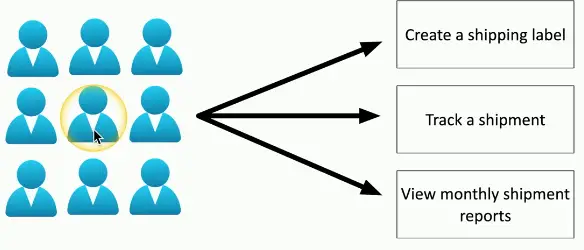

Using an Authorization Model
- Add an abstraction
- Reduce complexity
- Create a clear relationship between the user and the resource
- Administration is streamlined
- Easy to understand the authorizations
- Support any number of users or resources


Gap Analysis
- Where you are compared with where you want to be
- The “gap” between the two
- This may require extensive research
- There is a lot to consider
- This can take weeks or months
- An extensive study with numerous participants
- Get ready for emails, data gathering, and technical research
Choosing the Framework
- Get the baseline of employees
- Formal experience
- Current training
- Knowledge of security policies and procedures
- Examine the current processes
- Research existing IT systems
- Evaluate existing security policies
Compare and Contrast
- The comparison
- Evaluate existing systems
- Identify weakness
- Along with the most effective processes
- A detailed analysis
- Examine broad security categories
- Break those into smaller segments
The Analysis and Report
- The final comparison
- Detailed baseline objectives
- A clear view of the current state
- Need a path to get from the current security to the goal
- This will almost certainly include time, money, and lots of change control
- Time to create the gap analysis report
- A formal description of the current state
- Recommendations for meeting the baseline
Gap Analysis Overview
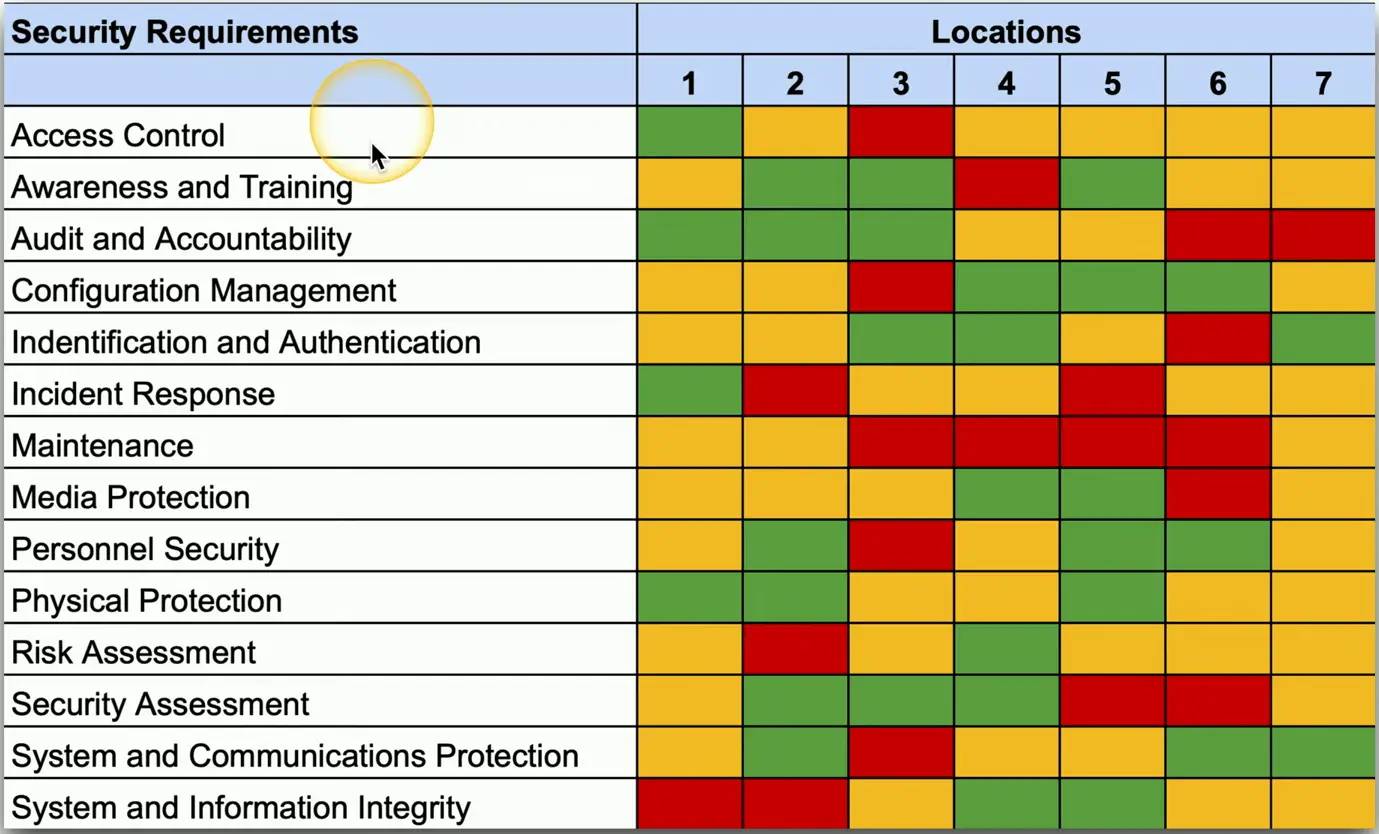

Zero Trust
- Many networks are relatively open on the inside
- Once you’re through the firewall, there are few security controls
- Zero trust is a holistic approach to network security
- Covers every device, every process, every person
- Everything must be verified
- Nothing is inherently trusted
- Multi-factor authentication, encryption, system permissions, additional firewalls, monitoring, and analytics etc.
Planes of Operation
- Split the network into functional planes
- Applies to physical, virtual, and cloud components
- Data Plane
- Process the frames, packets, and network data
- Processing, forwarding, trunking, encrypting, NAT
- Control Plane
- Manages the actions of the data plane
- Define policies and rules
- Determine how packets should be forwarded
- Routing tables, session tables, NAT tables
Extend the Physical Architecture
- Separate into functional tasks
- Incorporate into hardware or software


Controlling Trust
- Adaptive Identity
- Consider the source and the requested resources
- Multiple risk indicators — relationship to the organization, physical location, type of connection, IP address, etc.
- Make the authentication stricter, if needed
- Threat Scope Reduction
- Decrease the number of possible entry points
- Policy-driven access control
- Combine the adaptive identity with a predefined set of rules
Security Zone
- Security is more than a one-to-one relationship
- Broad categorization provide a security-based foundation
- Where are you coming from and where are you going
- Trusted, untrusted
- Internal network, external network
- VPN 1, VPN 5, VPN 11
- Marketing, IT, Accounting, HR
- Using the zones may be enough by itself to deny access
- For example,
Untrusted to Trusted zone traffic
- Some zones are implicitly trusted
- For example,
Trusted to Internal zone traffic
Policy Enforcement Point
- Subjects and systems
- End users, applications, non-human entities
- Policy enforcement point (PEP)
- Allow, monitor, and terminate connections
- Can consist of multiple components working together


Applying Trust in the Planes
- Policy Decision Point
- There’s a process for making an authentication decision
- Policy Engine
- Evaluates each access decision based on policy and other information sources
- Grant, deny, or revoke
- Policy Administration
- Communicates with the Policy Enforcement Point
- Generates access tokens or credentials
- Tells PEP to allow or disallow access
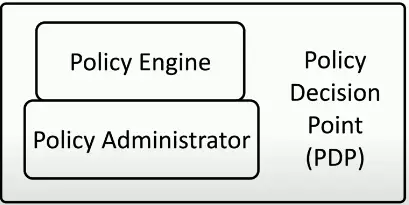

Zero Trust Across Planes
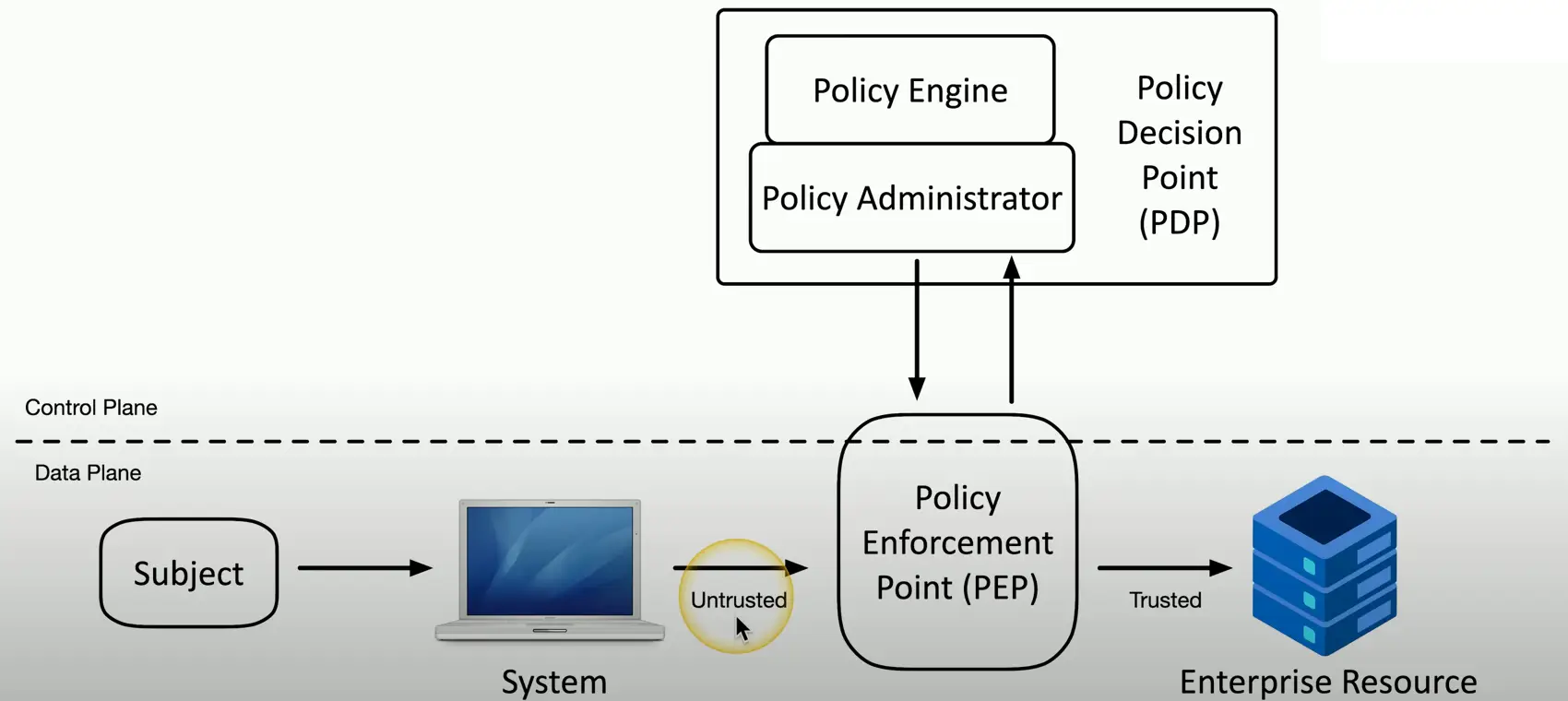

Physical Security
Barricades/ Bollards
- Prevent access
- There are limits to the prevention
- Channel people through a specific access point
- And keep out other things
- Allow people, prevent cars and trucks
- Identify safety concerns
- Can be used to an extreme
- Concrete barriers/bollards
- Moats (Water ditch around the facility)
Access Control Vestibules
- All doors normally unlocked
- Opening one door causes others to lock
- All doors normally locked
- Unlocking one door prevents others from being unlocked
- One door open/others locked
- When one is open, the other cannot be unlocked
- One at a time, controlled groups
- Managed control through an area
Fencing
- Build a perimeter
- Usually very obvious
- May not be what you’re looking for
- Transparent or opaque
- See through fence (or not)
- Robust
- Difficult to cut the fence
- Prevent Climbing
Video Surveillance
- CCTV (Closed circuit television)
- Can replace physical guards
- Camera features are important
- Motion recognition can alarm and alert when something moves
- Object detection can identify a license plate or person’s face
- Often many cameras
- Networked together and recorded over time
Guards and Access Badges
- Security Guard
- Physical protection at the reception area of a facility
- Validate identification of existing employees
- Two-person integrity/control
- Minimize exposure to an attack
- No single person has access to a physical asset
- Access badge
- Picture, name, other details
- Must be worn at all times
- Electronically logged
Lighting
- More light means more security
- Attackers avoid the light
- Easier to see when lit
- Non IR cameras can see better
- Specialized design
- Consider overall light levels
- Lighting angles may be important
- Avoid shadows and glare
Sensors
- Infrared
- Detects infrared radiation in both light and dark
- Common in motion detectors
- Pressure
- Detects a change in force
- Floor and window sensors
- Microwave
- Detects movement across large areas
- Ultrasonic
- Send ultrasonic signals, receive reflected sound waves
- Detect motion, collision detection etc.
Deception and Disruption
Honeypots
- Attract the bad guys
- The “attacker” is probably a machine
- Makes for interesting recon
- Honeypots
- Create a virtual world to explore
- Many options
- Most are open source and available to download
- Constant battle to discern the real from the fake
Honeynets
- A real network includes more than a single device
- Servers, workstations, routers, switches, firewalls
- Honeynets
- Build a larger deception network with one or more honeypots
- More than one source of information
Honeyfiles
- Attract the attackers with more honey
- Create files with fake information
- Something bright and shiny
- Honeyfiles
- Bait for the honeynet (passwords.txt)
- Add many honeyfiles to files shares
- An alert is sent if the file is accessed
Honeytokens
- Track the malicious actors
- Add some traceable data to the honeynet
- If the data is stolen, you will know where it came from
- API Credentials
- Doesn’t actually provide access
- Notifications are sent when used
- Fake email addresses
- Add it to a contact list
- Monitor the internet to see who posts it
- Many other honeytoken examples
- Database records, browser cookies, web page pixels











